While countries such as Scotland, Ireland and the USA have traditionally been regarded as leading Whisky producers, Whisky production has spread internationally in recent decades. Not only countries such as Japan and China have made a name for themselves in Whisky production, whisky is also being produced in different styles and regional variations in more and more other countries around the world. The demand and therefore the variety of international Whiskies is constantly increasing. In this overview, we explore the up-and-coming world of international Whisky with you and give you an insight into the different countries and their Whisky production.
Where can we find Whisky around the world?
Now it's getting adventurous! You've probably heard of Canadian Whisky or whisky from European countries. But did you also know that India and Taiwan are among the largest Whisky producers in the world?
Let's take a look at the world's Whiskies together!
Sweden
Mackmyra is not the only Whisky distillery in Sweden, but it is the best known. The idea came to the founders during a skiing trip. Distillation began in 1999 and was expanded on a large scale in 2002. Mackmyra is an innovative company that is constantly launching new bottlings on the market. They produce high-quality single malt Whisky in the Scottish style.
Other European countries
Whisky is being produced in more and more European countries - mostly in the Scottish style. We can offer you Whiskies from Denmark, England, Finland, France, Iceland, Italy, the Netherlands, Austria, Switzerland, the Czech Republic, Wales... You will find a large selection in our Europe overview. And of course also from Germany, to which we have dedicated a separate chapter.
India
The Indian Whisky McDowell's No. 1 is the best-selling Whisky in the world, ahead of the Officer's Choice, also from India, also known as OC. A total of seven Whiskies from the subcontinent are among the top sellers! India is both the largest producer and the largest consumer of whisky, with customers mainly found in its own country and in neighbouring countries. Not all Indian whisky varieties are recognised as Whisky in Europe! They are mostly blends of Indian grain Whiskies and a small proportion of imported Scottish malts. A lot of molasses is used in Whisky production, which is a by-product of sugar production. Sugar cane is much easier to grow than grain in a subtropical climate. This product is then blended with - as we understand it - 'normal' grain Whisky. A variety of different styles are produced. Brands such as Amrut and Paul John are internationally recognised. These distilleries produce Whisky in the Scottish style. Whisky production in these latitudes has one major advantage: The warm climate favours cask maturation!
Japan
Japan has grown enormously in importance in recent years and is often regarded as the leading producer of whisky outside Scotland. Japanese Whisky has earned a reputation for high quality and craftsmanship, winning numerous awards worldwide.
Japanese whisky is characterised by its high quality. We have therefore dedicated a separate chapter to it.
Thailand
Mekhong Whisky from Thailand redefines the term Whisky!
It is also known as 'The Spirit of Thailand'. Mekong is the name of a river in Asia that flows between Thailand and Laos, among other places. Due to British colonial rule in the past, Thailand also has British roots and has therefore learnt a lot about Whisky distilling. The Mekhong Whisky distillery was founded there in 1941.
Following the takeover of the Mekhong distillery by the Thai Beverage Company, Mekhong is now increasingly being marketed internationally, has been given an English label and has also been sold in Europe and the USA since 2011. You can tell here too: Whisky is on the rise!
In European terms, Mekhong is not a whisky!
Mekhong Whisky is only 35% and is therefore not Whisky according to European law. In this country, a spirit must have at least 40% to be labelled as Whisky. Mekhong is made from 95% molasses, which is left over from the extraction of sugar from cane sugar. In addition, Mekhong Whisky consists of 5% rice and also contains a secret blend of herbs and spices.
Pakistan
The combination of single malt Whisky and Pakistan is very unusual. But there is Murree's Brewery, a brewery in north-east Pakistan, which also produces single malt. However, this is only allowed for foreigners, as Pakistan is known to be a 'dry' country. The licence to produce Whisky in Pakistan is therefore only granted to non-Pakistanis, which makes the production of 'Murree's Millennium' not exactly easy. The Whisky has earned its designation as a single malt Whisky, as its production, from grain to storage to the bottle, follows the Scottish model!
Taiwan
TheKavalan distillery has impressed the whisky world with its award-winning Whiskies. They take advantage of Taiwan's warm climate to produce Whiskies that mature quickly and develop intense flavours. Production is based on the Scottish model using classic pot stills. With many different bottlings, it is not only available on the European market. You can read about the fascinating history of the company in our database.
Israel
In recent years, a Whisky industry has developed in Israel with high-quality whisky that has also attracted international attention. In 2015, the M&H Whisky distillery opened in Tel Aviv. Here, single malt Whisky is distilled on a still from Germany based on the Scottish model.
Canada
Canadian Whisky is appreciated for its smoothness and versatility. Initially, Canadian Whisky was mainly made from wheat, but later European settlers brought rye with them from their homeland. However, the most important type of grain to this day is corn. Nowadays, Whisky is mainly distilled from corn and wheat. Only rarely is malted barley used. A special feature is that the addition of flavourings up to 9.09% is permitted - but these bottlings are not sold on the European market! Distillation takes place predominantly in column stills and only occasionally in pot stills. Used bourbon casks as well as wine, sherry, brandy and rum casks are used for maturation. Many blended whiskies in Canada are not so much a blend of different distilleries as a blend of different varieties from one distillery. This also explains why almost all Canadian Whiskies are blended Whiskies! The spelling of Canadian Whisky is based on that of Scottish Whisky. The largest sales market is right next door in the USA.
There are around 40 different brands in total, of which only Crown Royal, Canadian Club and Lot No. 40 are known outside Canada. The Canadian Whisky industry was hit hard by Prohibition at the time and struggled to recover. To this day, 'Canadian Whisky' is considered an insider tip! We have put together a nice selection for you!
USA
Whiskey from the USA, with its many varieties such as Bourbon, Kentucky, Tennessee and Rye, naturally deserves its own page.
Whiskies from South America
The Whisky industry hardly plays a role in South America. The ABC countries Argentina, Brazil and Chile are starting with small projects. Overall, Central and South America is a strong rum market.
Whiskies from Africa
The James Sedgwick Distillery, named after the captain and later merchant James Sedgwick, produces the two Whiskies Bain's and Three Ships. The demand for high-quality spirits is increasing in Africa, meaning that further market growth can be expected
Whiskies from Australia
The history of Whisky in Australia began in 1860 and initially ended in the 1980s. Modern Whisky production was revitalised by the Australian Bill Lark on the island of Tasmania. The Lark Distillery has been distilling single malt Whisky from Tasmanian barley there since 1992. Shortly afterwards, the Sullivans Cove Distillery was founded, which brought remarkable Whiskies onto the market right from the start. In 2007, Sullivans Cove was honoured with the World Whiskies Award for the best single malt in the world. The distillation process is modelled on the Scottish method, with a great deal of experimentation with different yeasts, fermentation times and different barrel ageings. The south of Australia, and therefore also the island of Tasmania, is predestined for whisky production thanks to its temperate climate and sufficient water. Today, there are over 40 Whisky distilleries in Down Under.
Other types of Whisky - by grain type
There are a small number of other types of Whisky, but they are not very widespread. They are each named after the type of grain used. There are oat Whisky, millet Whisky and wheat Whisky.
Oat Whisky
Oat Whisky is meaning that the mash for this type of Whisky consists of oats instead of the usual barley. One example is the 'Koval Oat' from the Kovol Distillery based in Chicago, USA, which is very full-bodied and creamy thanks to the oats, with notes of banana and honey. Oats also play a particularly important role in the history of Irish Whiskey, as they were the only affordable grain in the second half of the 19th century. Today, oats are no longer so important in Whisky production, but there are occasional special bottlings with oats, such as those from Koval or from the German distillery Fitzke (Black Forest) or the distillery Weidenauer (Lower Austria).
Millet Whisky
Another type of grain that is occasionally used to make Whisky is millet. Millet is particularly widespread in Asia and Africa and is a popular base for spirits in Nepal. Millet Whisky is also produced in the American Koval Distillery, for example. The grain for this is even sourced from a local organic farmers' association in the Midwest of the USA. Millet has very small grains and can be malted like barley. The Whisky made from it is very fresh and aromatic, with typical complex notes of Asian fruits such as dates, ripe bananas and sweet lychees. You have to dig a little deeper into your pockets for such a rarity - as is so often the case with real specialities.
Conclusion
Is that all Whisky? Can we define what Whisky is? The EU and the USA have done just that and enshrined it in law. Why can't we also develop an idea in Asia? Are we, as in the past, the colonial power that determines what is Whisky and what is not? We Europeans should question this!


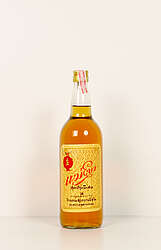
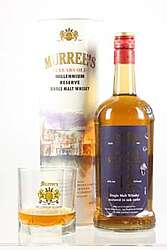






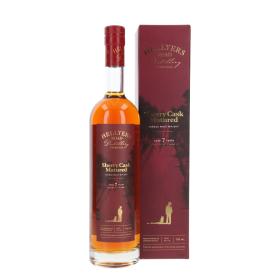

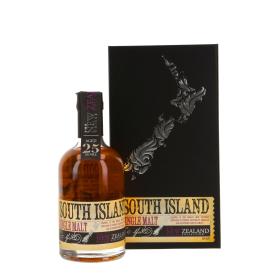



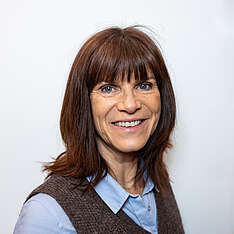
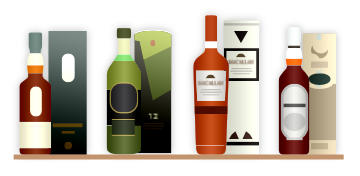
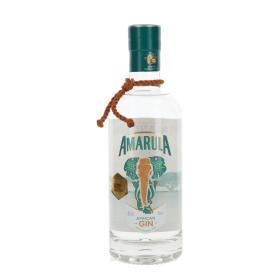
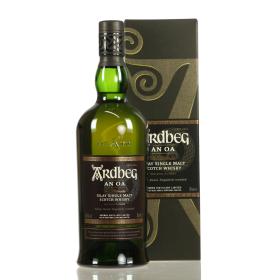

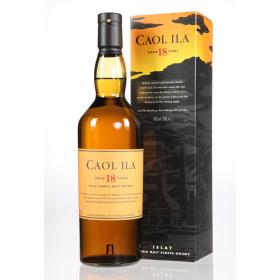











To comment, you must be logged in